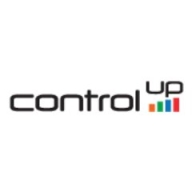

Nagios XI and ControlUp compete in the network service monitoring and performance administration category. ControlUp holds an edge due to its comprehensive user experience and extensive user integration capabilities.
Features: Nagios XI is built on Nagios Core, offering customizable plugins for flexibility and supporting disk space and CPU usage monitoring. It benefits from a strong community and many available plugins. ControlUp provides real-time performance monitoring, integrates with other software, and includes security and ROI-focused features. It is valued for its script capability and deep user experience integration.
Room for Improvement: Nagios XI requires additional plugins for expanded services and lacks clustering and failover functionalities. Configuration can be complex without a GUI and needs scripting knowledge. ControlUp users desire better integration and automation tools, more comprehensive reporting insights, and improved network infrastructure monitoring.
Ease of Deployment and Customer Service: Nagios XI is suited for on-premises and private cloud deployments but has complex setup processes, often needing community support. ControlUp offers flexible deployment across hybrid, public, and on-premises environments with easier setup. Nagios XI's customer support is good but occasionally slow with time zone issues. ControlUp is noted for responsive support but may need more integration attention.
Pricing and ROI: Nagios XI offers a cost-effective solution, especially with its open-source version, though XI's pricing has increased with flexible licensing options but costly support. Users see immediate ROI due to customizable deployment. ControlUp is higher priced relative to other tools but offers features justifying the cost. Users recognize competitive pricing and improved ROI through its advanced features.
| Product | Market Share (%) |
|---|---|
| Nagios XI | 3.2% |
| ControlUp | 1.1% |
| Other | 95.7% |


| Company Size | Count |
|---|---|
| Small Business | 3 |
| Midsize Enterprise | 2 |
| Large Enterprise | 8 |
| Company Size | Count |
|---|---|
| Small Business | 22 |
| Midsize Enterprise | 17 |
| Large Enterprise | 21 |
ControlUp is a digital experience monitoring management platform that makes it possible for IT teams to deliver a work-from-anywhere experience for employees. The solution makes fixing and preventing issues easy, enabling IT teams to make smarter decisions. It also provides monitoring performance, availability, and useful productivity metrics.
The ControlUp platform supports:
ControlUp Features
ControlUp has many valuable key features. Some of the most useful ones include:
ControlUp Benefits
There are many benefits to implementing ControlUp. Some of the biggest advantages the solution offers include:
Reviews from Real Users
Below are some reviews and helpful feedback written by PeerSpot users currently using the ControlUp solution.
A Chair, IEEE Consumer Technology Society - Dallas,Texas, USA at a non-profit says, “In terms of the public cloud, ControlUp's features make us feel very secure. Security, uptime, and reduced capital expenditures are the main reasons we use ControlUp. So basically, the money that we consume is based on the amount of time we are using a service. ControlUp offers a return-on-investment type of approach that helps us.”
A VP Virtualisation and Citrix Engineer at BlackRock mentions, “Solve is quickly becoming one of the most-used features. Its interface allows us to connect to all 54,000 monitored endpoints in real-time. The script-based actions have allowed us to extend the core reporting capabilities. Combined with the triggers, we have been growing their usage to fix things before they become an issue. Lastly, the controller view allows us to compare the configurations of settings side-by-side which is extremely helpful when tracking down the RCA of an issue.”
A Senior Citrix Remote Access Engineer at Rabobank comments, “The high-level view of the estate coupled with powerful administration tools has been great. We can see real-time performance and trends and can create triggers for common issues with associated scripts that can automate a lot of the previous manual remediation steps.”
Nagios XI provides monitoring of all mission-critical infrastructure components, including applications, services, operating systems, network protocols, systems metrics, and network infrastructure. Third-party add-ons provide tools for monitoring virtually all in-house and external applications, services, and systems.
Nagios XI uses a powerful Core 4 monitoring engine that provides users with the highest levels of server monitoring performance. This high degree of performance enables nearly limitless scalability and monitoring powers.
With Nagios XI, stakeholders can check up on their infrastructure status using the role-based web interface. Sophisticated dashboards enable access to monitoring information and third-party data. Administrators can easily set up permissions so users can only access the infrastructure they are authorized to view.
Nagios XI Benefits and Features
Some of the benefits and top features of using Nagios XI include:
Reviews from Real Users
Nagios XI stands out among its competitors for a number of reasons. Several major ones are its integration options and monitoring abilities, as well as its alerting features.
David P., a senior DevOps engineer at EML Payments Ltd, writes, “We use Nagios as a network discovery tool. We use Nagios to maintain our uptime statistics and to monitor our services. It has allowed us to be much more sophisticated in our monitoring and alerting.”
An IT-OSS manager at a comms service provider notes, “Nagios XI has a custom API feature, and we can expose custom APIs for our integration. This is a great feature.”
We monitor all IT Infrastructure Monitoring reviews to prevent fraudulent reviews and keep review quality high. We do not post reviews by company employees or direct competitors. We validate each review for authenticity via cross-reference with LinkedIn, and personal follow-up with the reviewer when necessary.